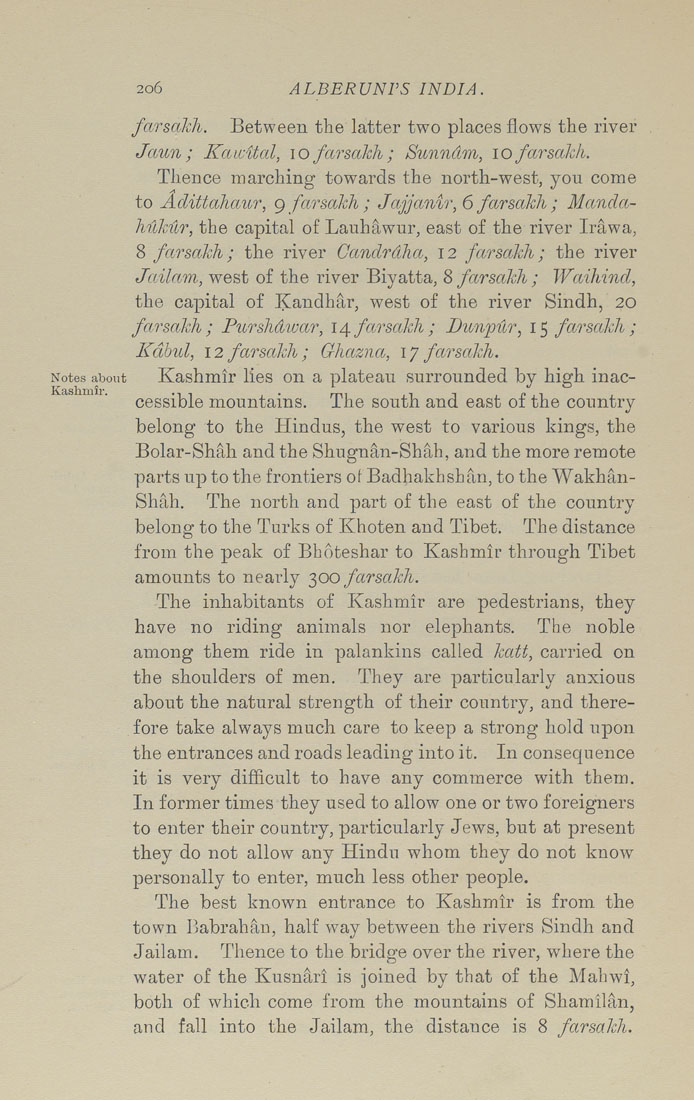Bīrūnī, Muḥammad ibn Aḥmad, Alberuni's India (v. 1)
(London : Kegan Paul, Trench, Trübner & Co., 1910.)
|
||
|
|
|
|
| Page 206 |

2o6 ALBERUNPS INDIA. farsakh. Between the latter two places flows the river Jaun; Kawital, \ofarsakh; Sunndm, lofarsakh. Thence marching towards the north-west, you come to Adittahaur, g farsa.kh ; Jajjanir, 6 farsakh ; Manda- hiikur, the capital of Lauhawur, east of the river Irawa, 8 farsakh; the river Gandrdha, 12 farsakh; the river Jailam, west of the river Biyatta, 8 farsakh; Waihind, the capital of Kandhar, west of the river Sindh, 20 farsakh; Burshdwar, 14. farsakh; Dunpur, 15 farsakh; ICctbul, 12 farsakh; Ghazna, ly farsakh. Notes about Kashmir lies on a plateau surrounded by high inac¬ cessible mountains. The south and east of the country belong to the Hindus, the west to various kings, the Bolar-Shah and the Shugnan-Shah, and the more remote parts up to the frontiers ot Badhakhshan, to the Wakhan- Shah. The north and part of the east of the country belong to the Turks of Khoten and Tibet. The distance from the peak of Bhoteshar to Kashmir through Tibet amounts to nearly ■^oo farsakh. The inhabitants of Kashmir are pedestrians, they have no riding animals nor elephants. The noble among them ride in palankins called katt, carried on the shoulders of men. They are particularly anxious about the natural strength of their country, and there¬ fore take always much care to keep a strong hold upon the entrances and roads leading into it. In consequence it is very difficult to have any commerce with them. In former times they used to allow one or two foreigners to enter their country, particularly Jews, but at present they do not allow any Hindu whom they do not know personally to enter, much less other people. The best known entrance to Kashmir is from the town Babrahan, half way between the rivers Sindh and Jailam. Thence to the bridge over the river, where the water of the Kusnari is joined by that of the Mahwi, both of which come from the mountains of Shamilan, and fall into the Jailam, the distance is 8 farsakh. |
| Page 206 |







